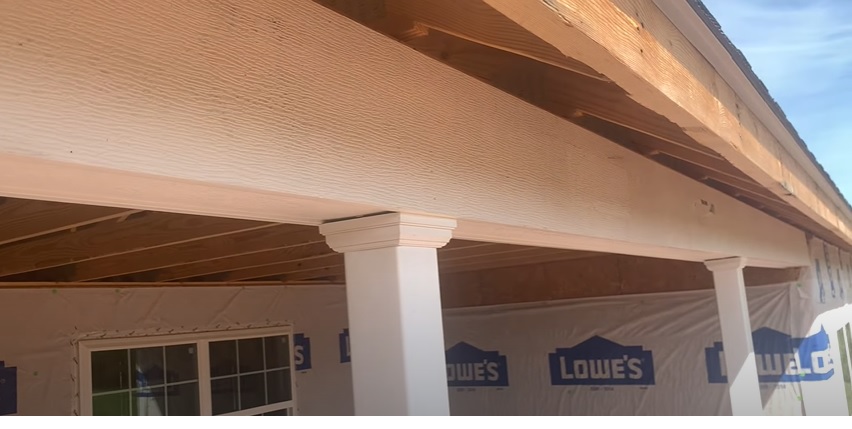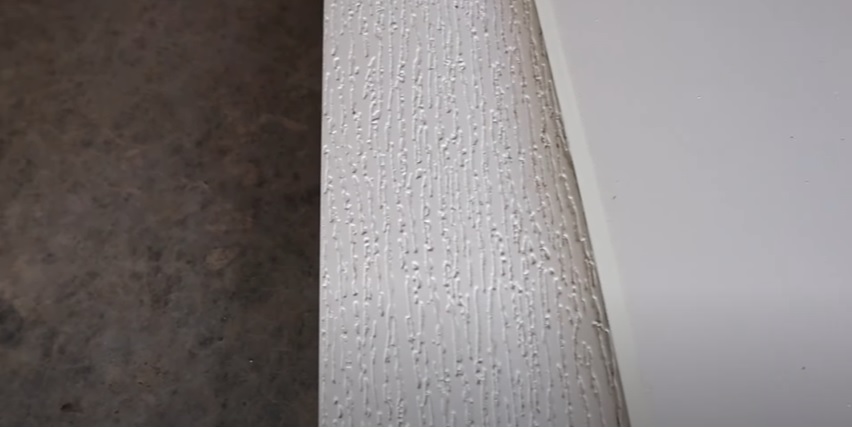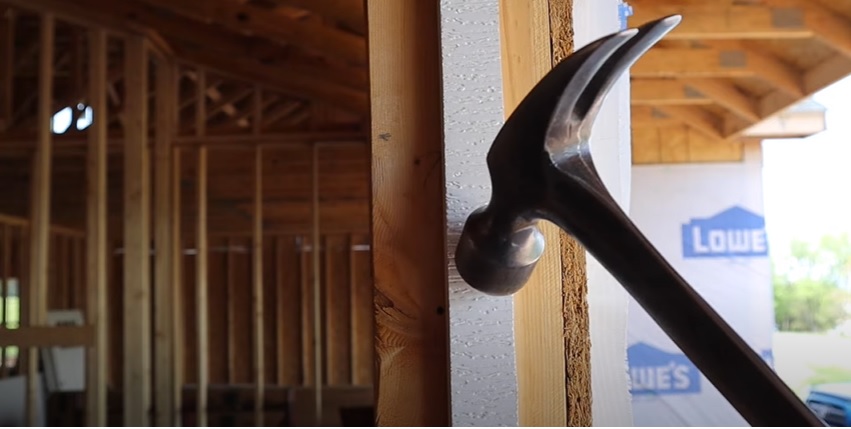In this article, I want to talk about trim. Specifically, PVC trim vs wood trim and whether or not you should invest the extra money in PVC.

A lot of first-time DIYers gravitate more toward wood trim, and there are certainly some compelling reasons for choosing this material. Wood has a natural grain that is the perfect base for staining, and it’s also sturdy and durable.
However, wood is only beautiful and durable as long as you’re able to maintain it properly. That can be difficult depending on where you decide to place your wood trim. Wood, as you probably know, rots when exposed to water for too long, which makes it less than ideal for bordering the exterior of your home or rooms in the house where there are water pipes in the wall or floor (i.e., bathroom, kitchen, or laundry room).
For those reasons, as well as others which I’ll explain in a moment, my recommendation is that you buy PVC trim. And yes, I realize that it’s more expensive than, say, pine wood trim. But by the end of this article, you’ll understand why it’s worth the extra cost.
By the way, before you install trim or start any other DIY house building project, ALWAYS CHECK YOUR LOCAL BUILDING CODES.
Table of Contents
ToggleAdvantages & Disadvantages of PVC Trim
First, let’s go over the advantages and disadvantages of PVC trim, so you can see why, in many situations, I prefer this material over wood.
Advantages of PVC Trim
- Rot Resistant

PVC is a type of chemically resistant plastic, and it’s also resistant to water. Unlike wood, it will never rot out, which means you can save a lot of money on trim replacements over the years with this material.
- Flexible

Unlike wood, which can be stiff and unforgiving, PVC trim is flexible. This makes it much easier to manipulate and install in tight places.
- Easy To Cut

PVC is easier to cut through than wood. Thus, the time it takes you to trim your trim (no pun intended) will potentially be a lot shorter.
- Requires No Maintenance
To keep wood looking nice and intact over the years, you’ll have to treat and stain it. You’ll also have to make sure to keep all moisture away from it, lest it start to rot. With PVC, though, you don’t even have to think about maintenance. You will probably want to clean it from time to time, of course, and you may also need to repaint the exterior PVC trim every few years. But that’s a negligible amount of work compared to the other.
- Comes in Wood Grain and Smooth Finishes

If you still want that wood grain look, but you want the weather resistance and flexibility of PVC, then you’re in luck! PVC trim often comes with a wood grain pattern on at least one side. And if you prefer a smooth finish, you can find that easily, as well.
- Can Be Painted
If you don’t like the white color that PVC trim comes in, you can paint it in any color you want. It’s highly customizable in that way!
Disadvantages of PVC Trim
- Dents Fairly Easily


I won’t lie, PVC trim dents fairly easily. You don’t have to hit it very hard to create an impression (as you can see in the image below). Keep that in mind when you’re installing it and try to be careful with your tools.
- Joints Must Be Glued

PVC trim joints must be glued with PVC cement to create the strongest bond possible. This isn’t so much of a disadvantage as a slight inconvenience.
- Costs More Than Wood Trim
The biggest drawback of PVC trim is its cost. There’s no denying that wood trim is more friendly to low DIY budgets. But given all the advantages it offers, as well as the prospect of it lasting far longer than wood trim, the higher price point is worth it for me.
Where Should You Use PVC Trim?
PVC trim is going to be the most useful in areas of your home that are exposed to moisture. As I mentioned earlier, PVC will never rot. So, if you get a lot of rain in your area, or if you’re worried about flooding, this is the perfect material to use on the exterior of your home.
For example, one of the best places to put PVC trim is around your exterior door. A lot of exterior doors that you buy from home improvement stores come with trim – called brick molding – already prefabricated. If your brick molding is made with wood trim, I highly recommend replacing it with PVC trim. The PVC will last longer out in the elements.
What about the interior of your home? For that, I suggest you use PVC trim in bathrooms, kitchens, and laundry rooms, as these are areas where homeowners commonly experience pipe leaks, bursts, or flooding. That way, hopefully, you’ll be able to save money on replacing the trim (if nothing else).
Should You Only Use PVC Trim?
Now, just because I’m a big fan of PVC trim doesn’t mean that I recommend you use it everywhere.
Of course, you can if you want to! Especially if you want a consistent look all throughout the interior and exterior of your DIY home. But if there are rooms in the house that a) aren’t exposed to the elements, and b) don’t have water pipes in the walls, floor, or ceiling, then you may safely decide to install wood trim in those areas.
It may even help you save money to put up PVC trim only where it’s most needed and use wood trim everywhere else.
Where Can You Buy PVC Trim?
So far, the best (and most affordable) PVC trim I’ve found is the Royal brand at Lowes Home Improvement and the Veranda at Home Depot. Both of them seem to be high quality while still not costing too much.
So, Should You Buy PVC Trim?
You heard it straight from the Excellent Laborer: you should absolutely invest in PVC trim for your DIY house build. While it will cost you more up front than wood trim, it will also last longer. Just don’t whack it too many times with your hammer!
For more DIY home building insights, as well as project tutorials, check out the rest of this blog and the Excellent Laborer YouTube channel. If you’re interested, you can also see which brands of tools and materials I like to use on my projects at the Excellent Laborer Amazon store.
